It was a dark cloudy day when I found myself standing in front of the sun temple at Konark in Odisha, in awe of the architecture. I have been to the
sun temple at Modhera in Gujarat but this shrine fascinated me with its stories. Built in the 13th century, the sun temple at Konark was designed like a chariot for Surya, the Sun God and it apparently took twelve years to build it. Kona means corner and Arka means sun and it probably referred to the corner dedicated to the deity. Built by King Narasimha 1 of the Ganga Dynasty, about 1200 people worked on this massive chariot designed with ornately carved twenty four wheels drawn by seven horses. It is believed that the king wanted to build this temple to celebrate his victory over the Sultans of Delhi.
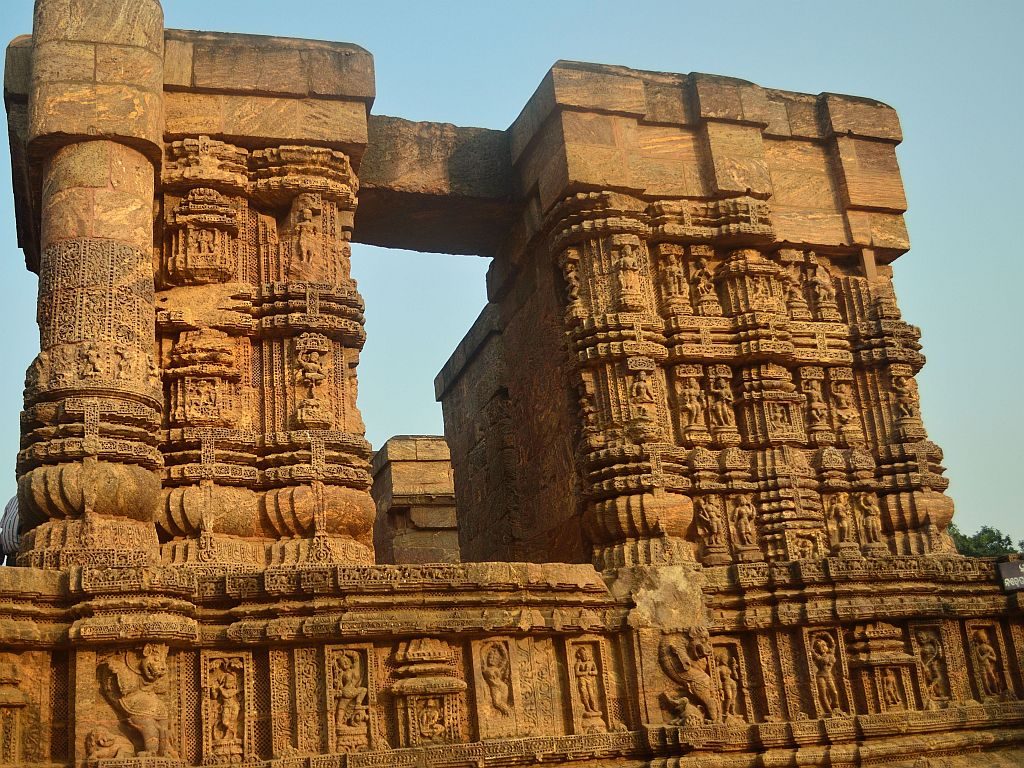
There are several legends relating to the sun temple at Konark , that takes you back to mythology. Apparently, one of the stories say that the king identified this place as it was once an estuary of the river Chandrabhaga where it joined the sea. It was considered pure as it had cured Samba, one of the many sons of Krishna of a curse and who found a deity of Surya in the sands. Today however the sea has retreated and the river is dead as well.

If the
Puri Jagannath temple was referred to as the White Pagoda, the Europeans called the sun temple at Konark as the Black Pagoda. The latter, once built on the sea shore was apparently spotted by the sailors from the coast. The main deity of Surya, apparently built with some iron material blended with stone and it was held using two magnets – one on top and the other on the bottom and it was considered a floating idol as it lay suspended in the air. Apparently there were several iron plates interspersed between the stones of the temples and the magnet placed on the top was massive. According to the legend,European sailors sailing on the seas could see the diamond sparkling from the idol. The magnets used to swerve the ships off the coast, misguiding them and were removed later. The sea however retreated over the course of the year.

As I stand here today, watching the sun’s rays stroking the 800 year old UNESCO World Heritage Site, tourists are busy posing for selfies while guides approach me. The sun temple at Konark lies in the direction of East – West and has been damaged in several wars. Even today, restoration work is going on. There was a tower or a shikara over the main shrine and it had been razed while the dance hall or Natyamandir and audience hall of Jagamohana needed a lot of work although the ornate carvings of dancers take your breath away. At the entrance you can see two lions killing an elephant who in turn crushes a man. Apparently, they represent pride and wealth which are the nemesis of man .
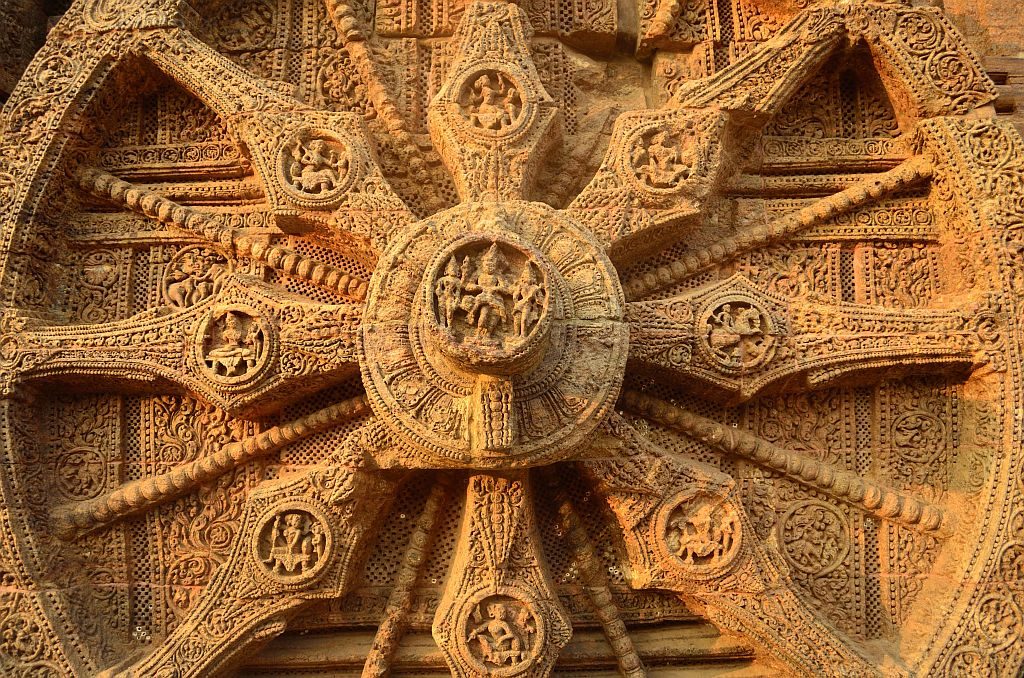
However I cannot take my eyes off the ornate wheels. Rabindranath Tagore rightly said that “the language of stone surpasses the language of man ” and it is difficult to find words to describe the grandeur of the shrine . The ten feet in diameter refer to the twenty four hours in a day . However there are several interpretations with respect to the number – could they be the zodiac signs, the twelve calendar months besides just the 24 hours of a day and were used as sun dials. Whatever it could be, they represent the Wheels of Life. The seven horses of course stand for the days of the week.These massive horses built at a height of 7 feet and 10 feet in length are like symbols of the state.. The names of these horses represent the seven colours of the rainbow and their names are apparently documented in the Bhagavad Geeta.
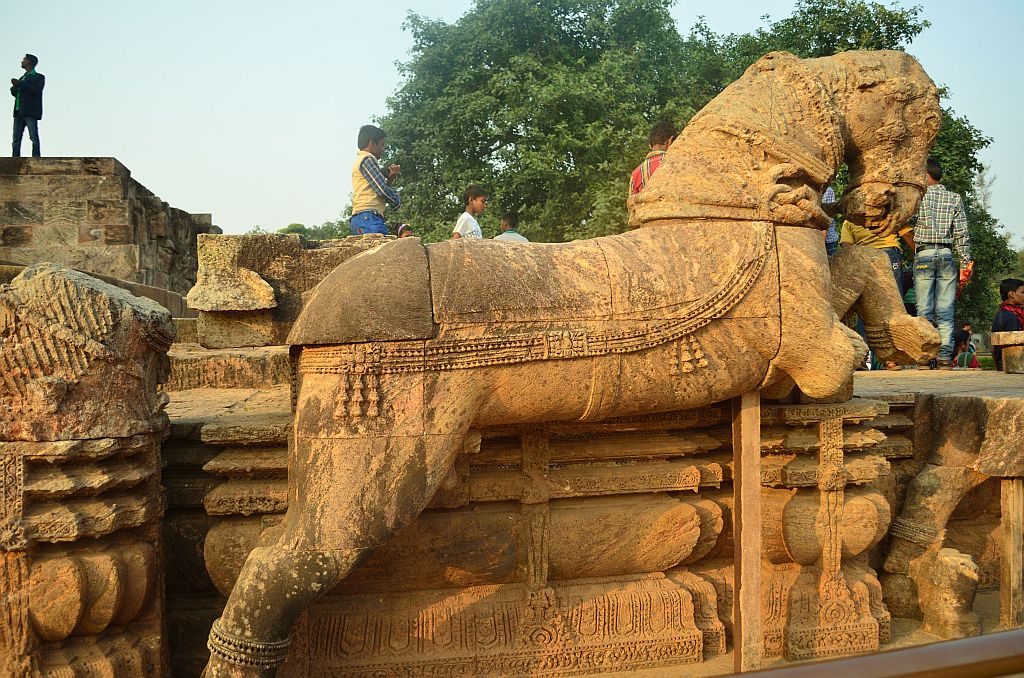
Everything about the sun temple at Konark is an ode to time. On the walls of the temple, you can see three images of Surya captured at various of the day. The temple is filled with carvings. There are images of mythological creatures, scenes of war and erotic carvings as well. There are several explicit scenes of passions that adorn the walls, however they are almost like miniature sculptures unlike the larger than life erotic carvings in Khajuraho.

However there are several sculptures carved here besides the erotic carvings. While the main halls are filled with dancers and musicians, there are friezes depicting scenes from daily social life to even war scenes. Birth and death are captured in this eternal cycle . One of the guides show a sculpture where an old lady departs on a pilgrimage, leaving her son as if it is last journey on earth. There are several carvings of elephants – over 1450 of them in the last row of the temple and some of them even show the king and his warriors mounted on them.
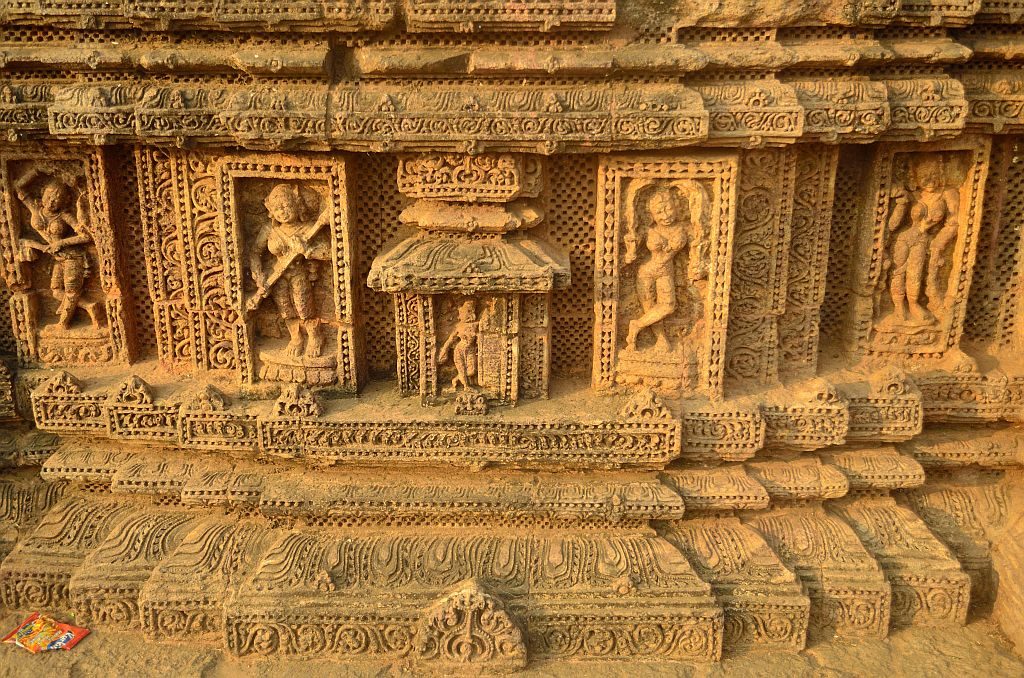
Today the temple lies in ruins and there are several theories around it. One of them say that the European sailors destroyed it by removing the magnets that veered them off the course. Another story says that local wars and eventual conflicts coupled with earthquakes were the cause of the ruined structure. Even today, no one knows where exactly the main deity is – some say, it was taken to the
Puri Jagannath temple, others say it was destroyed or buried in sand while some historians debate that it is one of the deities housed in the museum in Delhi.
As I leave however, I hear a tragic story of a twelve year old boy who sacrificed his life to save his father’s honor. Dharmapada, the twelve year old son of the chief architect Bishu Maharana had not seen his father since birth and had decided to surprise him on his birthday. It is said that the sculptors were working on the shrine for twelve years and the king had ordered that no one can go home until the temple was completed. The boy helped his father with a problem concerning the temple but he jumped to his death from here into the sea, lest the king realized that his father had failed in creating the temple.
The tourists slowly troop in as the sun slowly gets a bit harsh. Its time for me to leave the sun temple at Konark and get back on the road to see more ancient
temples in Bhubaneshwar.More stories on Odisha
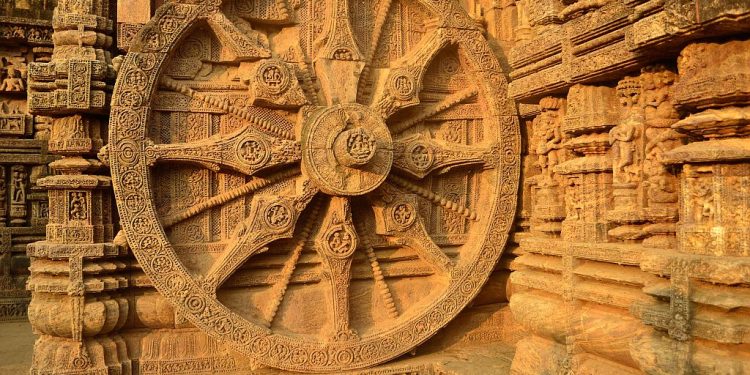







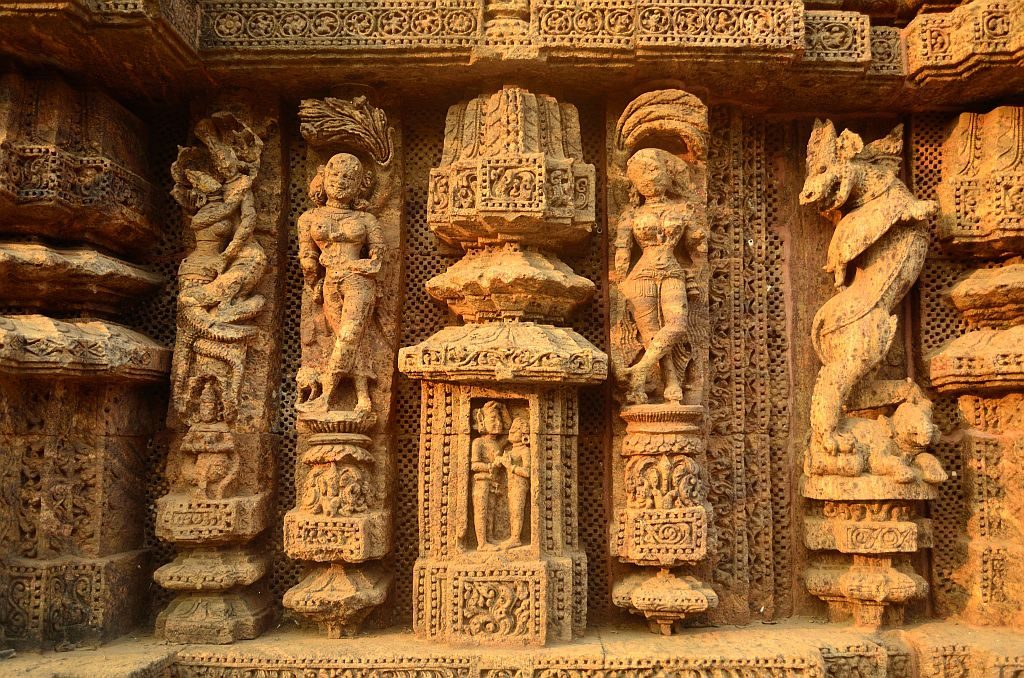
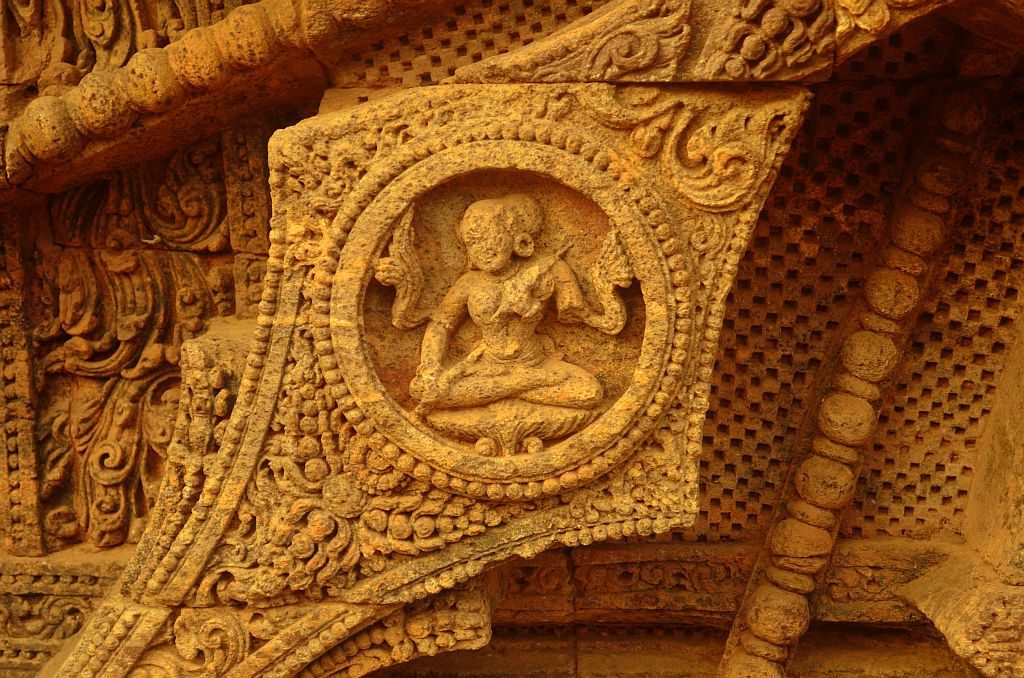

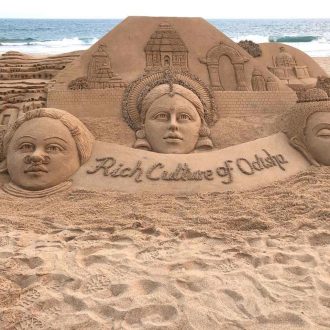
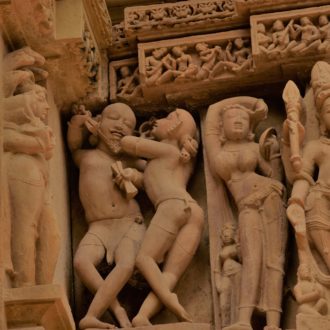
How exquisite!
Very useful article. I have been following your articles regularly. They are quite interesting and fascinating. I appreciate your work especially of finding out the facts about the lore knowledge. I wish you all great moments ahead.
Thank you,
with warm regards,
your fan,
viandlore
[email protected]
Love this! I had not seen such a detailed post before and it made me feel like I was there, such a fascinating culture, can’t wait to visit I one day!
Extra ordinary things mind blowing thanks for sharing this information we appreciate your work.